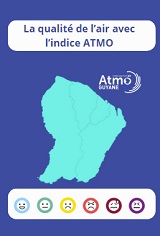Blada.com
mardi 16 décembre
Boîtes aux lettres
Courrier des lecteurs
Petites annonces
Emploi / Formation
Covoiturage
Infos citoyennes
Infos citoyennes
09/02/22
En Guyane, la recherche sur le diabète fait un bond en avant
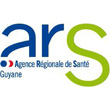
L’an dernier, les professionnels de santé guyanais ont publié 17 articles sur le diabète, dans des revues scientifiques. Dans le territoire, ce sont les premiers sur cette pathologie qui touche 8 à 10 % de la population, le double de l’Hexagone. Ils traduisent la structuration de la filière depuis quelques années. Ils livrent surtout des informations sur les patients du territoire et sur la nécessaire adaptation des recommandations.
L’importance du dépistage du diabète, le rôle de la vitamine D, la prescription d’activité physique en médecine de ville, ce qui conduit les patients diabétiques aux urgences… En Guyane, la recherche sur le diabète a fait un bond en avant : dans les deux dernières années 17 articles ont été publiés dans des revues scientifiques par les chercheurs du territoire. Ce sont les premiers sur le diabète en Guyane.
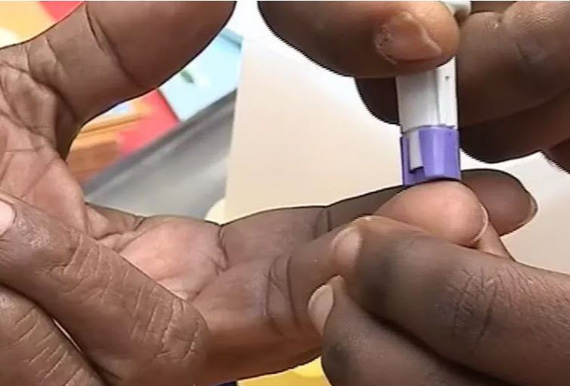 Ils traduisent la structuration de la filière ces dernières années. Le service d’endocrino-diabétologie a été créé en 2017 au Centre Hospitalier de Cayenne (CHC). Un congrès et un diplôme universitaire de diabétologie ont suivi. Un infirmier en pratique avancée (IPA) a été recruté. Des assistants partagés également, dans le cadre de la convention entre les hôpitaux du territoire et l’Assistance Publique – Hôpitaux de Paris (AP-HP). La collaboration avec les professionnels de santé libéraux s’est renforcée, notamment à travers l’application d’e-santé Globule. La cohorte Codiam (Cohorte diabète en Amazonie française) a été créée avec plus de 1 250 patients inclus, et plus de 600 paramètres recueillis. Et le Dr Nadia Sabbah, chef du service d’endocrino-diabétologie nutrition à l’hôpital de Cayenne, bénéficie, depuis fin 2019, de 30 % de temps de recherche. « Je me suis détachée des soins, témoigne-t-elle. Les patients me le reprochent parfois. Mais on a pu recruter d’autres professionnels et je peux me poser pour travailler sur les articles et développer la recherche clinique elle aussi partie importante de l’évolution des soins en Guyane. »
Ils traduisent la structuration de la filière ces dernières années. Le service d’endocrino-diabétologie a été créé en 2017 au Centre Hospitalier de Cayenne (CHC). Un congrès et un diplôme universitaire de diabétologie ont suivi. Un infirmier en pratique avancée (IPA) a été recruté. Des assistants partagés également, dans le cadre de la convention entre les hôpitaux du territoire et l’Assistance Publique – Hôpitaux de Paris (AP-HP). La collaboration avec les professionnels de santé libéraux s’est renforcée, notamment à travers l’application d’e-santé Globule. La cohorte Codiam (Cohorte diabète en Amazonie française) a été créée avec plus de 1 250 patients inclus, et plus de 600 paramètres recueillis. Et le Dr Nadia Sabbah, chef du service d’endocrino-diabétologie nutrition à l’hôpital de Cayenne, bénéficie, depuis fin 2019, de 30 % de temps de recherche. « Je me suis détachée des soins, témoigne-t-elle. Les patients me le reprochent parfois. Mais on a pu recruter d’autres professionnels et je peux me poser pour travailler sur les articles et développer la recherche clinique elle aussi partie importante de l’évolution des soins en Guyane. »
Beaucoup de carence en vitamine D
Mieux connaître le diabète en Guyane est important. La prévalence y est de 8 à 10 % (chiffres de 2014), deux fois plus que dans l’Hexagone. Codiam a dévoilé de premiers résultats, sur les 600 premiers patients inclus à Cayenne. Un article publié dans Nutrients par le Dr Élise Girard (CHC) montre que « la prévalence de la carence en vitamine D était élevée chez les patients diabétiques en Guyane française, soulignant l'importance de la supplémentation en vitamine D ». Dans le détail, « les patients souffrant d'angine de poitrine avaient une plus grande proportion de déficiences en vitamine D que ceux sans angine. En revanche, les patients souffrant de rétinopathie présentaient des concentrations de vitamine D plus élevées que ceux qui n'en souffraient pas. Il n'y avait pas d'association entre la vitamine D et l'artériopathie, l'accident vasculaire cérébral, la néphropathie et la polyneuropathie. La carence en vitamine D était plus fréquente chez les femmes, et chez les patients ayant un niveau d'études secondaires. »
Un suivi insuffisant des patients
Réalisée en 2018 et 2019 avec la direction régionale du service médical de l'assurance maladie (DRSM), une étude sur le suivi de tous les patients diabétiques du territoire a révélé un écart entre les pratiques locales et les recommandations nationales : « Moins de 56% des patients avaient un dosage d'HbA1c deux fois par an, moins de 43% avaient un bilan rénal annuel, seulement 19% avaient un bilan ophtalmologique au moins tous les deux ans, moins de 25% avaient un bilan dentaire annuel, et moins de 4% avaient un suivi annuel chez le podologue. Le suivi insuffisant du diabète est un problème majeur susceptible d'augmenter la morbidité et la mortalité. L'adaptation des soins de santé aux spécificités du territoire est cruciale, notamment en formalisant la délégation des soins à des infirmiers en pratique avancée et à des non professionnels de santé dans les zones précaires ou géographiquement isolées. »
« 80 % des hypoglycémies hospitalisées aux urgences sont évitables »
Un article, publié dans Diabetic Medicine, se penche sur le cas de 178 adultes diabétiques, admis aux urgences de Cayenne, entre 2015 et 2018 pour une hypoglycémie sévère. « La principale cause d'hypoglycémie était une erreur de dosage de l'insuline ou des objectifs glycémiques inappropriés », écrit le Dr Fabien Poret. Le Dr Sabbah précise : « 80 % des hypoglycémies étaient évitables, à condition de bien former les patients et nos collègues. C’est la raison première du DU de diabétologie. Beaucoup de soignants du territoire s’y inscrivent. »
Des obstacles à la prescription de l’activité physique
Parmi les médecins de ville, le Dr Stéphanie Dranebois, installée à Soula (Macouria), a publié dans Frontiers in Endocrinology, un article sur la prescription d’activité physique par les médecins généralistes aux patients diabétiques de type 2. C’était son sujet de thèse. En interrogeant 152 médecins généralistes, elle a constaté que 74% prescrivaient l’activité physique à leurs patients. « Cependant, seulement 37% des médecins généralistes ont répondu qu'ils appliquaient les recommandations ; en effet, seulement un tiers d'entre eux les connaissaient. La majorité des médecins généralistes étaient intéressés par une formation à l'activité physique, mais seuls 11% ont effectivement été formés à cette pratique. Le manque de structure adaptée à sa pratique et la méconnaissance de ses bénéfices dans la pathologie métabolique sont apparus comme les principaux obstacles à la prescription de l’activité physique. »
10 % de diabète gestationnel et un bon suivi
Également installé en ville, dans le centre de Cayenne, le Dr Loïc Léonço a lui aussi publié un article tiré de sa thèse. Il s’agissait d’« évaluer le rôle du dépistage précoce et universel du diabète gestationnel sur les complications obstétricales et néonatales dans une population socialement défavorisée ». « On a constaté 10 % de diabète gestationnel chez les femmes accouchant à Cayenne, résume le Dr Sabbah. Il touche plus souvent des femmes précaires. On s’attendait à beaucoup de problèmes de macrosomie (poids du bébé à la naissance supérieur à 4 kg). Mais comme le suivi des femmes a été renforcé, que l’on inclut toutes les femmes à haut risque dans notre filière (250 à 300 par an), cela n’a pas été le cas. » Les cas de macrosomie et d’hypoglycémie représentaient 2,8 % des naissances. « Loïc Léonço a été le premier interne du service d’endocrino-diabétologie, rappelle son ancienne cheffe de service. Cela facilite les relations entre l’hôpital et la ville. »
Des adaptations et des projets
« La prise en charge thérapeutique et éducative est un défi car elle nécessite l'adaptation des outils et des traitements au multiculturalisme et à la précarité et la précarité souvent rencontrés dans les populations de Guyane, souligne le Dr Sabbah, dans le World Journal of Diabete. Les recommandations françaises et européennes sont inadaptées aux besoins du territoire. Elles doivent prendre en compte les paramètres épidémiologiques, sociologiques et culturels de ces populations afin de permettre une prise en charge adaptée et graduée du diabète en Amazonie française. » Elle cite « les programmes d'éducation thérapeutique réalisés en association avec des médiateurs culturels qui effectuent à la fois la traduction et l'adaptation du discours en fonction des croyances et de la culture de chacun. » Au Centre Délocalisé de Prévention et de Soins de Grand-Santi avec le Dr Niemetzky Florence, par exemple, « l'équipe médicale et paramédicale a mis en place une bande dessinée et des films éducatifs traduits en sranan tongo. »
Plusieurs projets sont en cours pour la filière d’endocrino-diabétologie nutrition. D’abord l’installation, au Centre Hospitalier de Kourou (CHK), d’un d’hôpital de jour en endocrinologie, diabétologie et risque cardiovasculaire. Également la transformation de la cohorte Codiam en registre, comme il existe déjà un registre des cancers en Guyane. « Ce serait une richesse énorme pour le territoire. »
Cet article est issu de la Lettre pro de l’Agence régionale de santé. Vous pouvez vous y abonner en remplissant le formulaire suivant : https://forms.sbc28.com/5a8bed50b85b5350ef1cd117/t13M7zUZQi2XMq5E3DdnhQ/0WQoeDwjRXqJblCpKbLDzA/form.html
 Last year, Guianese health professionals published 17 articles on diabetes in scientific journals. In the territory, they are the first on this pathology which affects 8 to 10% of the population, twice that of France. They reflect the structuring of the sector for several years. Above all, they provide information on the patients in the area and on the necessary adaptation of the recommendations.
Last year, Guianese health professionals published 17 articles on diabetes in scientific journals. In the territory, they are the first on this pathology which affects 8 to 10% of the population, twice that of France. They reflect the structuring of the sector for several years. Above all, they provide information on the patients in the area and on the necessary adaptation of the recommendations.
The importance of diabetes screening, the role of vitamin D, the prescription of physical activity in community medicine, what leads diabetic patients to the emergency room... In French Guiana, research on diabetes has made a leap forward : in the last two years, 17 articles have been published in scientific journals by researchers in the territory. They are the first on diabetes in French Guiana.
 They reflect the structure of the sector in recent years. The endocrine-diabetology department was created in 2017 at the Center Hospitalier de Cayenne (CHC). A congress and a university degree in diabetology followed. An advanced practice nurse (APN) has been recruited. Assistants also shared, within the framework of the agreement between the hospitals of the territory and the Assistance Publique – Hôpitaux de Paris (AP-HP). Collaboration with self-employed health professionals has been strengthened, in particular through the Globule e-health application. The Codiam cohort (diabetes cohort in the French Amazon) was created with more than 1,250 patients included, and more than 600 parameters collected. And Dr. Nadia Sabbah, head of the nutrition endocrinology-diabetology department at Cayenne hospital, has benefited from 30% research time since the end of 2019. “I broke away from care, she testifies. Patients sometimes blame me for that. But we were able to recruit other professionals and I can settle down to work on the articles and develop clinical research, which is also an important part of the evolution of care in French Guiana. »
They reflect the structure of the sector in recent years. The endocrine-diabetology department was created in 2017 at the Center Hospitalier de Cayenne (CHC). A congress and a university degree in diabetology followed. An advanced practice nurse (APN) has been recruited. Assistants also shared, within the framework of the agreement between the hospitals of the territory and the Assistance Publique – Hôpitaux de Paris (AP-HP). Collaboration with self-employed health professionals has been strengthened, in particular through the Globule e-health application. The Codiam cohort (diabetes cohort in the French Amazon) was created with more than 1,250 patients included, and more than 600 parameters collected. And Dr. Nadia Sabbah, head of the nutrition endocrinology-diabetology department at Cayenne hospital, has benefited from 30% research time since the end of 2019. “I broke away from care, she testifies. Patients sometimes blame me for that. But we were able to recruit other professionals and I can settle down to work on the articles and develop clinical research, which is also an important part of the evolution of care in French Guiana. »
Lots of vitamin D deficiency
Knowing diabetes better in French Guiana is important. The prevalence there is 8 to 10% (2014 figures), twice as much as in France. Codiam has unveiled initial results, on the first 600 patients included in Cayenne. An article published in Nutrients by Dr Élise Girard (CHC) shows that “the prevalence of vitamin D deficiency was high among diabetic patients in French Guiana, highlighting the importance of vitamin D supplementation”. In detail, “patients with angina pectoris had a greater proportion of vitamin D deficiencies than those without angina. In contrast, patients with retinopathy had higher vitamin D concentrations than those without. There was no association between vitamin D and arteriopathy, stroke, nephropathy, and polyneuropathy. Vitamin D deficiency was more common in women, and in patients with secondary education. »
Insufficient follow-up of patients
Carried out in 2018 and 2019 with the regional management of the health insurance medical service (DRSM), a study on the follow-up of all diabetic patients in the territory revealed a gap between local practices and national recommendations: "Less than 56 % of patients had an HbA1c assay twice a year, less than 43% had an annual kidney check-up, only 19% had an ophthalmological check-up at least every two years, less than 25% had an annual dental check-up, and less 4% had an annual follow-up with a podiatrist. Insufficient follow-up of diabetes is a major problem likely to increase morbidity and mortality. The adaptation of health care to the specificities of the territory is crucial, in particular by formalizing the delegation of care to nurses in advanced practice and to non-health professionals in precarious or geographically isolated areas. »
"80% of hypoglycaemia hospitalized in the emergency room is avoidable"
An article, published in Diabetic Medicine, looks at the case of 178 diabetic adults admitted to the Cayenne emergency room between 2015 and 2018 for severe hypoglycemia. "The main cause of hypoglycaemia was an error in insulin dosing or inappropriate glycemic targets", writes Dr. Fabien Poret. Dr. Sabbah specifies: “80% of hypoglycaemia was avoidable, provided that the patients and our colleagues were properly trained. This is the primary reason for the DU in diabetology. Many caregivers in the area sign up."
Obstacles to the prescription of physical activity
Among the city doctors, Dr. Stéphanie Dranebois, based in Soula (Macouria), published in Frontiers in Endocrinology, an article on the prescription of physical activity by general practitioners to type 2 diabetic patients. of thesis. By interviewing 152 general practitioners, she found that 74% prescribed physical activity to their patients. “However, only 37% of general practitioners answered that they applied the recommendations; indeed, only a third of them knew them. The majority of general practitioners were interested in training in physical activity, but only 11% were actually trained in this practice. The lack of structure adapted to its practice and the ignorance of its benefits in metabolic pathology appeared as the main obstacles to the prescription of physical activity."
10% gestational diabetes and good follow-up
Also based in town, in the center of Cayenne, Dr. Loïc Léonço has also published an article from his thesis. The aim was to “evaluate the role of early and universal screening for gestational diabetes on obstetric and neonatal complications in a socially disadvantaged population”. “We found 10% of gestational diabetes among women giving birth in Cayenne, summarizes Dr. Sabbah. It more often affects precarious women. We expected a lot of macrosomia problems (birth weight of the baby above 4 kg). But as the follow-up of women has been strengthened, as we include all high-risk women in our sector (250 to 300 per year), this has not been the case." Cases of macrosomia and hypoglycaemia accounted for 2.8% of births. “Loïc Léonço was the first intern in the endocrine-diabetology department, recalls his former head of department. This facilitates relations between the hospital and the city."
Adaptations and projects
"Therapeutic and educational care is a challenge because it requires the adaptation of tools and treatments to multiculturalism and the precariousness and precariousness often encountered in the populations of French Guiana, underlines Dr. Sabbah, in the World Journal of Diabetes. The French and European recommendations are unsuited to the needs of the territory. They must take into account the epidemiological, sociological and cultural parameters of these populations in order to allow appropriate and graduated management of diabetes in the French Amazon. She cites “the therapeutic education programs carried out in association with cultural mediators who carry out both the translation and the adaptation of the discourse according to the beliefs and culture of each one." At the Delocalized Prevention and Care Center of Grand-Santi with Dr Niemetzky Florence, for example, " the medical and paramedical team has set up a comic strip and educational films translated into Sranan Tongo."
Several projects are underway for the endocrinology-diabetology and nutrition sector. First the installation, at the Kourou Hospital Center (CHK), of a day hospital in endocrinology, diabetology and cardiovascular risk. Also the transformation of the Codiam cohort into a registry, as there is already a cancer registry in French Guiana. “It would be an enormous wealth for the territory. »
This article is from the Professional Letter of the Regional Health Agency. You can subscribe to it by filling out the following form: https://forms.sbc28.com/5a8bed50b85b5350ef1cd117/t13M7zUZQi2XMq5E3DdnhQ/0WQoeDwjRXqJblCpKbLDzA/form.html
Raccourcis


passer une petite annonce

passer une annonce de covoiturage


passer une annonce d’emploi


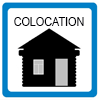


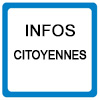
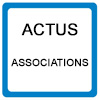
associations, postez vos actualités

participez au courrier des lecteurs
La Guyane c’est ici
La qualité de l’Air avec
ATMO
Photothèque

Lancements 2022
Vol 259 Ariane 5



